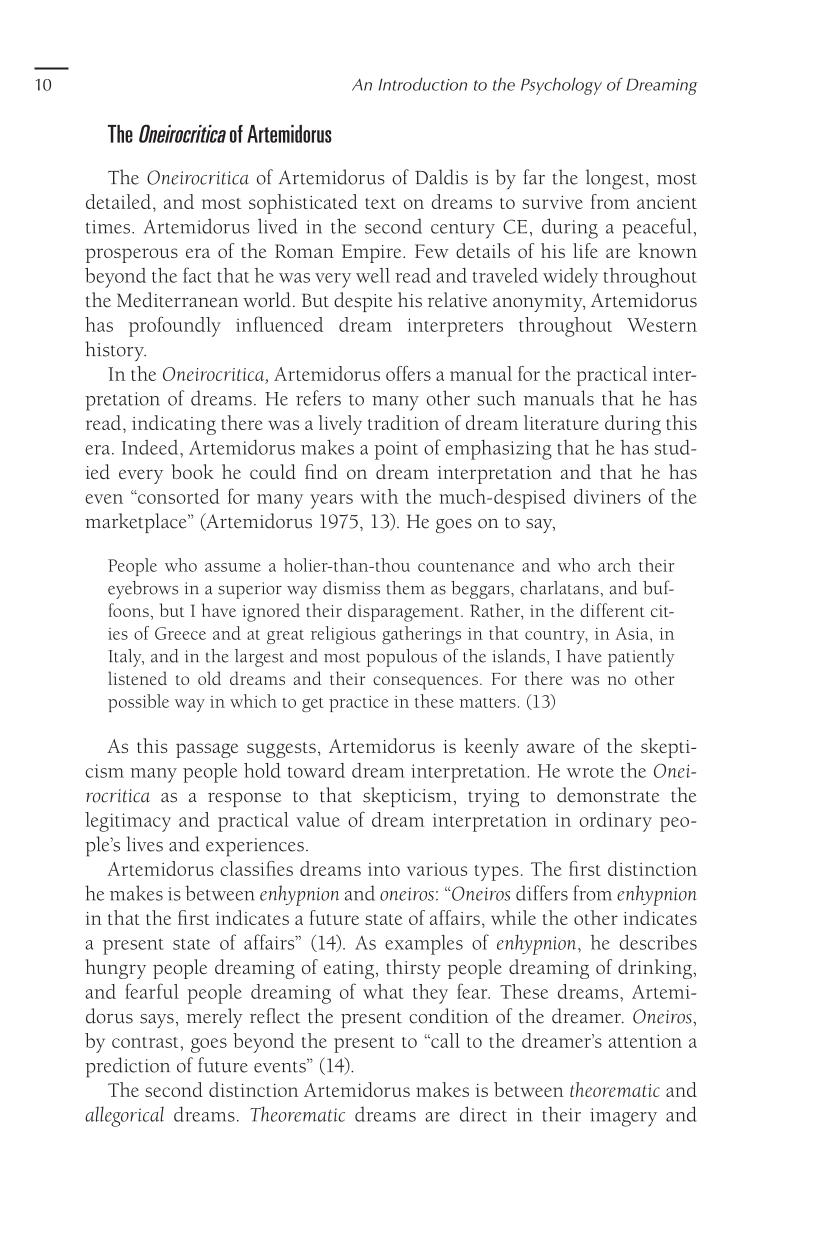10 An Introduction to the Psychology of Dreaming
The Oneirocritica of Artemidorus
The Oneirocritica of Artemidorus of Daldis is by far the longest, most
detailed, and most sophisticated text on dreams to survive from ancient
times. Artemidorus lived in the second century CE, during a peaceful,
prosperous era of the Roman Empire. Few details of his life are known
beyond the fact that he was very well read and traveled widely throughout
the Mediterranean world. But despite his relative anonymity, Artemidorus
has profoundly influenced dream interpreters throughout Western
history.
In the Oneirocritica, Artemidorus offers a manual for the practical inter-
pretation of dreams. He refers to many other such manuals that he has
read, indicating there was a lively tradition of dream literature during this
era. Indeed, Artemidorus makes a point of emphasizing that he has stud-
ied every book he could find on dream interpretation and that he has
even “consorted for many years with the much-despised diviners of the
marketplace” (Artemidorus 1975, 13). He goes on to say,
People who assume a holier-than-thou countenance and who arch their
eyebrows in a superior way dismiss them as beggars, charlatans, and buf-
foons, but I have ignored their disparagement. Rather, in the different cit-
ies of Greece and at great religious gatherings in that country, in Asia, in
Italy, and in the largest and most populous of the islands, I have patiently
listened to old dreams and their consequences. For there was no other
possible way in which to get practice in these matters. (13)
As this passage suggests, Artemidorus is keenly aware of the skepti-
cism many people hold toward dream interpretation. He wrote the Onei-
rocritica as a response to that skepticism, trying to demonstrate the
legitimacy and practical value of dream interpretation in ordinary peo-
ple’s lives and experiences.
Artemidorus classifies dreams into various types. The first distinction
he makes is between enhypnion and oneiros: “Oneiros differs from enhypnion
in that the first indicates a future state of affairs, while the other indicates
a present state of affairs” (14). As examples of enhypnion, he describes
hungry people dreaming of eating, thirsty people dreaming of drinking,
and fearful people dreaming of what they fear. These dreams, Artemi-
dorus says, merely reflect the present condition of the dreamer. Oneiros,
by contrast, goes beyond the present to “call to the dreamer’s attention a
prediction of future events” (14).
The second distinction Artemidorus makes is between theorematic and
allegorical dreams. Theorematic dreams are direct in their imagery and












































































































































































